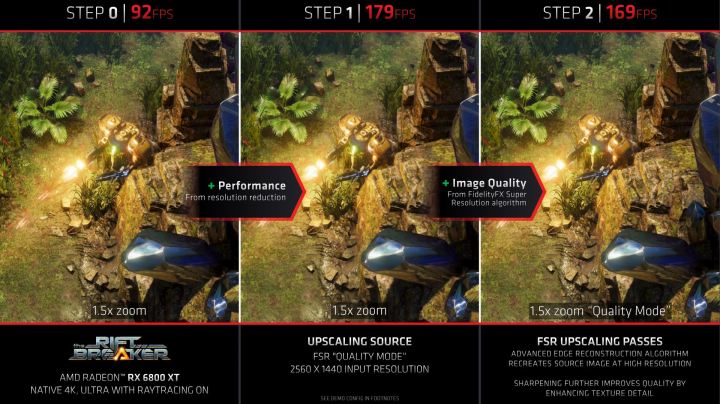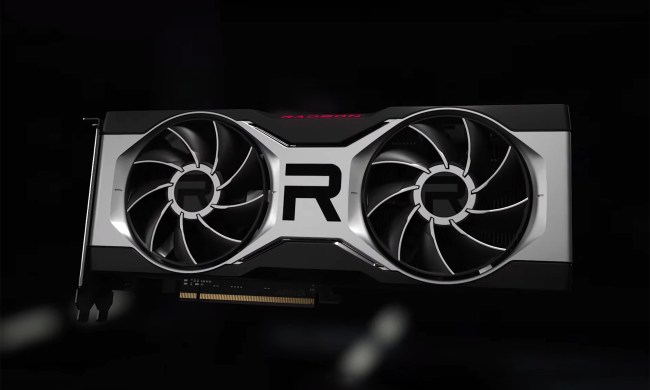Following an announcement at Computex 2021, AMD has officially released its FidelityFX Super Resolution (FSR). According to AMD, FSR can achieve up to a 2.4x increase in performance versus native 4K, and it works across several generations of graphics cards from AMD and Nvidia.
At launch, FSR support is available in seven games: Godfall, The Riftbreaker, 22nd Century Racing Series, Anno 1800, Evil Genius 2, Kingshunt, and Terminator Resistance. AMD also announced several upcoming games that will support the feature, including Far Cry 6, Resident Evil Village, and Forspoken. Over 40 developers have signed up to work with FSR, so you can expect even more games to feature it over the coming months.
AMD showed off benchmarks for the biggest titles in the launch lineup. At 4K with ray tracing turned on, Godfall jumped from an average of 64 frames per second (fps) to 156 fps at 4K in FSR’s Performance mode. That was with the already powerful RX 6900 XT. Using the more modest GTX 1060 at 1080p, Godfall went from 40 fps to 58 fps with the Performance mode.

Performance mode is the most aggressive of the four modes FSR can run in. Ultra Quality mode provides 1.3x scaling and is as close to native resolution as possible. Quality provides 1.5x scaling, Balanced offers 1.7x scaling, and Performance provides 2x scaling. In the Performance mode, FSR can upscale a 1080p image to 4K or a 720p image to 1440p. In our hands-on testing of FSR, we found that Ultra Quality mode is the best. It delivers a significant performance boost and doesn’t fall victim to visual artifacts like some of the other modes.
FSR is similar to Nvidia’s deep learning super sampling (DLSS), but it works differently. AMD’s feature doesn’t require any specific hardware or per-game training. Instead, FSR sits in the rendering pipeline directly before on-screen effects. It takes a low-input resolution and upscales it through two passes. First, the image is passed through an edge reconstruction algorithm to replicate native resolution. After that, the frame goes through a sharpening pass to restore detail.

Because FSR doesn’t require specific hardware, it works across multiple GPU generations. AMD says FSR is already working on its RX 6000/6000M, RX 5000/5000M, RX Vega, RX 500, and Ryzen 2000 processors with Radeon graphics. It also works on the RX 480, 470, and 460, as well as Nvidia’s RTX 30-series, RTX 20-series, and GTX 10/16-series graphics cards. Although FSR works on Nvidia cards, AMD says it isn’t optimizing the feature for them.
FSR is coming to the GPUOpen platform in mid-July with support for DirectX 11 and 12, as well as Vulkan. Developers will be able to implement the open-source code into their games with support for fixed and dynamic resolution upscaling. Although FSR is optimized on a per-game basis, it doesn’t require per-game training. It will work on virtually any platform, including Linux and Mac, if developers choose to enable it.
AMD says FSR is only the first step into this upscaling realm. The company is continuing to work on other upscaling techniques, including improvements to FSR and new upscaling methods. You can start using FSR today in supported games by downloading the driver from AMD’s support site, and you can request new titles through AMD’s FSR wish list.




